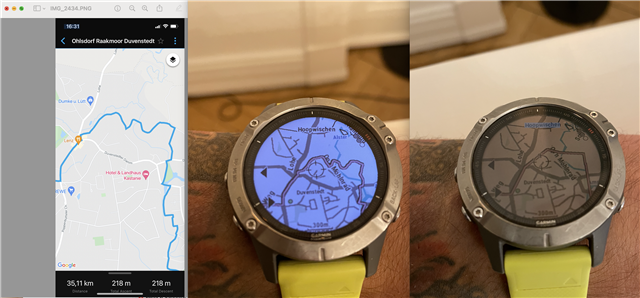There is a bug in the navigation / courses feature in Fenix, that i have experienced with several different units.
If you make a course/route for navigation e.g. during you run and you choose "Do course in reverse" you path will not be entirely accurate. Instead the course will be straightened out between course points, potentially sending you through mountains, swamps, or buildings etc. The only workaround is to always choose the normal "Do Course" feature and follow the path backwards or to draw the course in the other direction and save a s a copy.
The entire course will not be wrong, but after a while it stops being accurate. The image below is showing km 25-30 in a 50k course: left is course as drawn in Garmin Connect, middle is how the course loads in normal mode (correct) and right side shows how course loads when using "Do Course in Reverse". I experienced this with several courses and it took a while to figure out in which exact context this problem occurs. NB the course is well within the limit of the maximum allowed course points.
This should be easy to bug fix?


